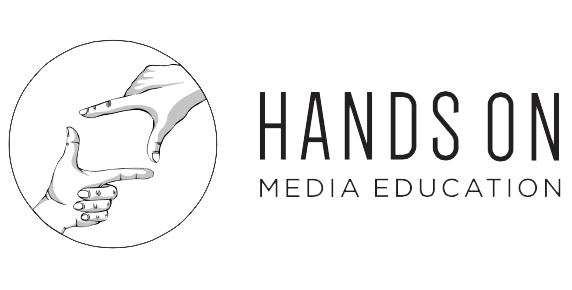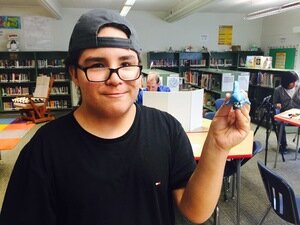Discover the advantage of technology in the classroom for kids with special needs
Yesterday, Hands on Media conducted an in-classroom workshop in North Vancouver with a group of 7 kids at the incredible Kenneth Gordon Maplewood Elementary School, dedicated to students with special needs. We thought today would be a great time to spread the word about the importance and value of technology (specifically iPads) in special needs classrooms as students use slide shows, movies, audio presentations, and music to learn and to communicate. How can your special needs students benefit? Here are a few fast facts:
* Software is more predictable and orderly than human communication, which is usually context-dependent and nuanced. Kids with some form of autism can often feel safer and more ready to communicate through software than human interaction.
* For tools to work with special needs kids, they need to be motivating and encouraging, engaging them in repeated attempts to use the tools. Kids on the autism spectrum are often not motivated by authority and instruction the same way some other kids are (ie. “Teacher has told me to do this, so I will.”) Software, and particularly large, portable, high-resolution tablets like iPads, is visually engaging and appealing, rather than simply instructional like some traditional classroom tools. Autistic kids are often more adept at learning and communicating visually rather than verbally.
* For students with physical or motor impairments, tablets and their highly receptive touchscreens are more aligned with how their bodies move. For example, these kids may find it easier to tap and swipe than to point and click with a mouse. Tablets allow them to keep their eyes focused on one spot (the screen) rather than moving their eyes, necks, and heads between a screen and a keyboard.
* Digital technology is multi-sensory and customizable; if a student is impaired visually, she can deploy aural and audio technologies to communicate her ideas, and vice versa. Non-verbal students may find it useful to communicate through images, shapes, and colours, making them more expressive overall and increasing their variable range of communication.
* Digital communications can increase social awareness and social communications skills. Video chats, for example, may help students focus specifically on learning to read facial cues, a big part of the emotional development of students with special needs.
* iPads and other digital technologies are “cool”, unlike some older development tools for students with special needs, which often came with stigma. Students with learning disabilities already feel like they’re on the margins; contemporary digital technologies are a non-conspicuous way of customizing the learning environment for special needs students without making them feel out of place.
* Text-to-speech software (a program that reads type words aloud in audio) can help students analyze and revise their written work; hearing the text read aloud may assist students in catching grammatical errors that are harder to catch through reading alone. Studies show that text-to-speech software “can improve students’ sight reading and decoding abilities” and “can improve the reading comprehension of individuals with specific deficits in phonological processing (difficulty hearing letter-sounds) as students can learn to decode new words when they are highlighted as they are read aloud.”
* Any students who struggle with the mainstream curriculum due to their particular needs or disabilities will respond well to something that is perceived as fun! “It’s more like a game for them,” says Christina Panichi, a third grade special education teacher in New Jersey. “For some reason when technology is involved—especially cartoons—it engages them more.”
There you have it! These are just a few of the many advantages that digital technology, and especially tablets, can bring to student with special needs. Research into the benefits is still on-going and developers continue to design a huge array of products for special needs kids. But the future looks bright as humankind expands the ways in which we communicate through the power of technology!



